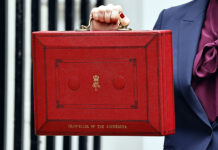Mandatory recycling labelling is on hold, but there is no time for complacency. Jude Allan, interim managing director at OPRL, explains what steps brands need to take.
WHEN OPRL was founded back in 2009, our aim was to increase recycling of packaging by providing clear instructions to consumers. It was the vital link missing from a largely sequestered chain. Fifteen years later, labelling is proving its worth. However, there is still much to do.
Defra recently announced that mandatory labelling would not now be included under the first stages of Extended Producer Responsibility for Packaging (pEPR). The rationale is to avoid potentially unnecessary costs to businesses and frictions to trade, due to similar reforms currently being considered by the EU.
While the decision represents a slight setback, we are encouraged that Defra also highlighted the need for brands to continue to use labelling to help customers recycle in the interim. At this stage, it is critical that we do not lose momentum.
Recycling lies at the heart of pEPR – recycling rates will have an impact on the level of fees paid by obligated businesses, as well as helping to drive greater volumes of recycled material into the system. We need consumers to engage with recycling, and the most effective way to achieve this is through clear labelling.
Why do we need labels?
OPRL research has shown that when they are uncertain about whether or not to recycle, the majority of householders look for instructions on packaging. Most people want to do the right thing, but when they’re not sure, we see recyclable products placed in general waste bins and non-recyclables contaminating recycling containers.
Recycling has a huge impact on carbon; it helps to preserve valuable resources, and also saves money. Under pEPR, brands face a hike in costs when they become responsible for the full net cost of recycling, and the less recyclable the packaging, the more the producer will pay. To alleviate this cost burden, many are already investing in packaging redesign but, if consumers fail to place the items in the correct container, their work will go to waste.
Clear labelling is the key. It has a positive impact on participation in recycling which, in turn, leads to a better environment and reduced costs for everyone.
Preparing for mandatory labelling
Although the timeline has shifted, mandatory labelling under pEPR is still on the horizon, so getting it right now will smooth the process enormously further down the line. Labelling spans the full lifecycle of packaging products, from design to end of life – and those brands that have already allocated a space to house a label, and addressed recyclability, will be ten steps ahead of those scrambling to adapt when labelling comes into pEPR.
Is it recyclable?
As brands start to prepare, the first question they need to ask is, ‘Is my packaging recyclable?’. Our experience at OPRL shows that the majority of producers are not clear on the recyclability of their packaging.
We work with industry groups and local authorities to assess recyclability. Our members are able to use the ‘Recycle’ label if at least 75% of UK local authorities collect this type of packaging and it is then effectively sorted, processed, and sold as recyclate for use in new packaging or products. Because technology and practices evolve over time, our labelling guidance is subject to scrutiny from a Technical Advisory Committee, comprising representatives from across the value chain, including brands and retailers, trade associations, reprocessors, local authorities, and experts such as climate action NGO WRAP.
For example, we work with our partners RECOUP (Recycling of Used Plastics to test rigid plastic packaging, in order to determine whether: the pack type and material is collected in the UK; the pack size, type and material combination can be sorted and recycled at typical UK Materials Recovery Facilities (MRF) and Plastics Recovery Facilities (PRF); and, finally, whether there is a market for that recycled material. Only then can producers claim that their material is certified as recyclable.
While we find our binary ‘Recycle’ and ‘Do Not Recycle’ labels the most effective for the majority of products, we recently introduced calls to action, such as ‘Empty’ or ‘Scrunch’. With brands and retailers increasingly looking to refillable packaging as an alternative to single-use, we also provide a labelling range aimed at refills.
While these progressions reflect the shift to more environmentally-friendly packaging, they also illustrate the importance of providing clear instructions. After all, the first step towards making the right choice is to understand what the right choice looks like.















